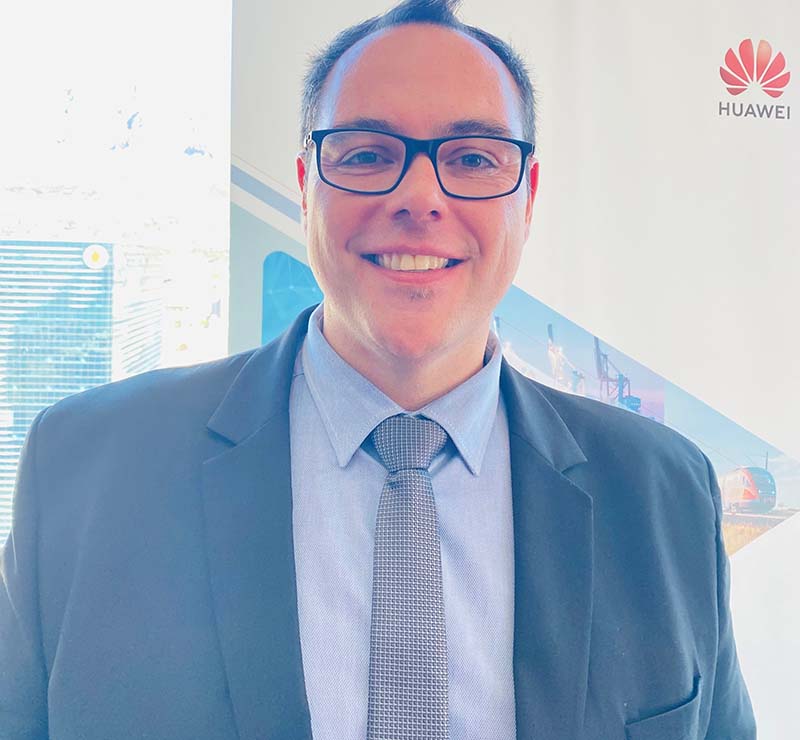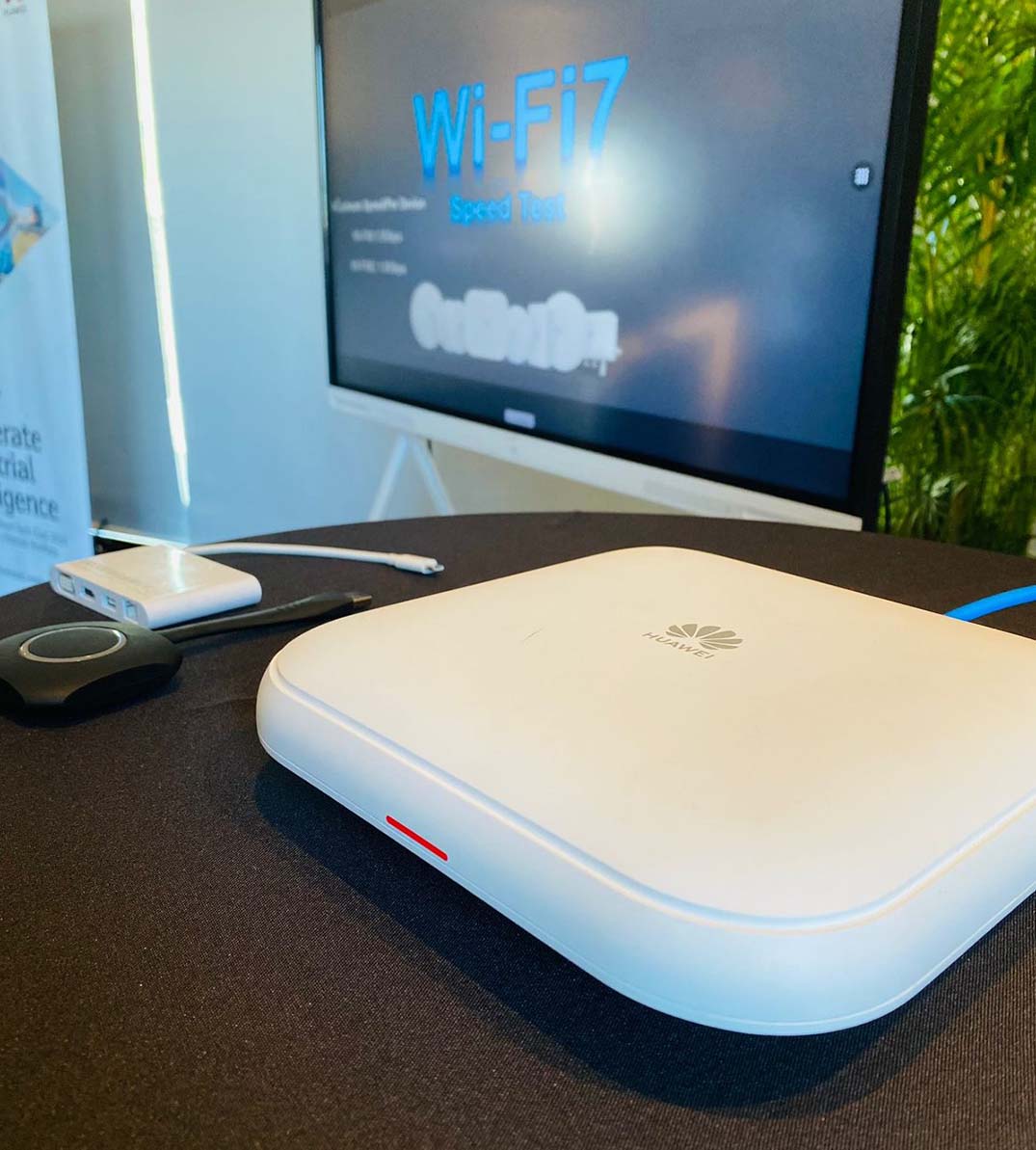The Huawei Cape Town Tech Club recently hosted more than 150 guests, ranging from tech enthusiasts to industry leaders at its annual summit in the vibrant mother city. The event explored the forefront of innovation and technological advancement as speakers shared emerging trends and new products that enhance Huawei’s vision of building a connected world. Guests were also treated to demonstrations of the latest Huawei platforms and technologies.
In his opening address, Cape Town Regional Director for Huawei Shaun van Zyl, emphasised the company’s focus on R&D investment and breakthroughs, which has led to significant achievements: “Last year Huawei invested 24% of its annual revenue into R&D, enabling us to drive innovation in technology, ensuring a healthy supply chain and ecosystem, and accelerating digital transformation in various industries. Huawei has world-class leading solutions that we offer in these various sectors, with a large focus on finance, retail, education, public and healthcare as well as ISPs, at affordable costs, but at no sacrifice to performance or service.”

Cape Town Regional Director for Huawei Shaun van Zyl
Huawei’s esteemed experts also launched brand new offerings like the HiSec SASE Solution, which
promises intelligent safeguarding for enterprise branches. The audience also gained insights into Huawei’s high-quality 10 Gbps CloudCampus. Both are geared towards improving connectivity and security for corporate digital systems.
New Huawei enterprise solutions that upgrade security and connectivity
The Huawei HiSec SASE solution provides comprehensive protection for data centres, networks, and B2B services against security threats such as, information leakage, botnets, Trojan horses, and unauthorised access.
Bernhard Alexander Heyer, IP Products Manager at Huawei, notes that; “common attacks such as ransomware, DDoS attacks, and APT attacks are multiplying year-by-year, and causing serious data and financial loss to enterprises, especially to multi-branch enterprises.”
As businesses gradually move their branch systems to the cloud, some of the challenges they encounter include: slow service deployment and poor user experience, cost and complexity of getting traditional security systems to match the headquarters model, lower work efficiency due to a large amount of security incidents at branches and slow response times caused by operation and maintenance procedures (O&M) and a lack of security skills.
Heyer explained that “Huawei’s HiSec solution, transforms defence systems from reactive ones to proactive ones by offering cloud-based analytics for network wide analysis and O&M.” For example he adds; “the Qiankun platform provides second level response and 99.95% detection accuracy, reducing response time from 2 days to a few seconds.”
Customers also benefit from converged SASE gateways that combine all the advanced security features with routing and switching for ultimate security with reduced complexity and cost.
On the connectivity side of the event’s offering, Huawei’s new, experience-centric 10 Gbps CloudCampus solution allows enterprises of all sizes to unlock higher efficiency and convenience.
“When driven by both technologies and applications, enterprises see three major changes amid their digital and intelligent transformation: fully wireless terminals, always-assured applications, and intelligent O&M,” said Huawei Senior Solution Manager Floyd Naidoo.

Huawei’s all-scenario Wi-Fi 7 is an industry-first facility upgrade providing single terminal test speeds of up to 4.33 Gbps, twice that of Wi-Fi 6E networks.
As a result, “ultra-large files can be downloaded in seconds,” according to Naidoo.
The solution also brings the industry’s first campus digital map, which is a four-dimensional map of networks, users, terminals, and applications that visualises the end-to-end (E2E) experience, helping to locate the root causes of problems by one click. This can improve O&M efficiency by 10 times, said Naidoo.
Updates on E2E flash storage infrastructure and Huawei’s Data Center Solution
Other Huawei experts at the event shared updates on storage frameworks including E2E Flash Storage infrastructure for the intelligent era and Huawei’s Data Center Solution known as DCS.
Senior Storage Architect for Huawei Enterprise Solutions, Clinton George spoke on how the company is creating end-to-end flash storage infrastructure for an intelligent era. With Huawei’s F2F2X (Flash to Flash to Anything) architecture, customers are able to build more efficient, secure, and green data centres. The F2F2X data centre storage architecture covers the storage spectrum from all flash storage to backup and archiving, as well as multilayer ransomware protection and end to end management.
“For core and business critical workloads, Huawei’s OceanStor Dorado all-flash storage solution provides best-in industry performance, availability and reliability to address databases, virtual machines and containers,” said George.
For HPDA, AI, and big data, OceanStor Pacific all-flash scale out storage earned the Gartner Peer Insights Customer Choice award for scale out storage.
Huawei IT Solution Manager, Aadhir Maharaj presented updates to the DCS virtualization solution which has over five million Virtual Machine (VM) deployments globally and covers more than 150 countries and regions worldwide. Huawei has over 15 years of investment in development of this product with key highlights being dual Stack capability for Virtualization and Containers being released in 2022.
“The development is ongoing with a key focus around Big Data and AI in our roadmap for the next release,” said Maharaj.
Advanced capabilities like a built-in eBackup for VM protection, an open ecosystem to support third party servers and operating systems, and most importantly a perpetual licence which is 40% cheaper than the top three competitors within the market all give Huawei’s DCS a competitive edge.
Commitment to connectivity
Huawei’s commitment to enhancing intelligent connectivity is exemplified in the tremendous investment the company puts towards research and development (R&D). More than half of its 207 000 employees are dedicated to the R&D team and nearly a quarter of the company’s annual revenue is reinvested in this area, said Van Zyl.
With the rise of new technologies such as the Internet of Things, Big Data, Cloud computing, Virtual Reality and Artificial Intelligence, there is an increasing need for solutions that can help enterprises raise the bar while keeping systems safe from threats.
Through the range of tools and technologies platformed at this event, Huawei displayed its continued commitment to accelerating industrial intelligence.
